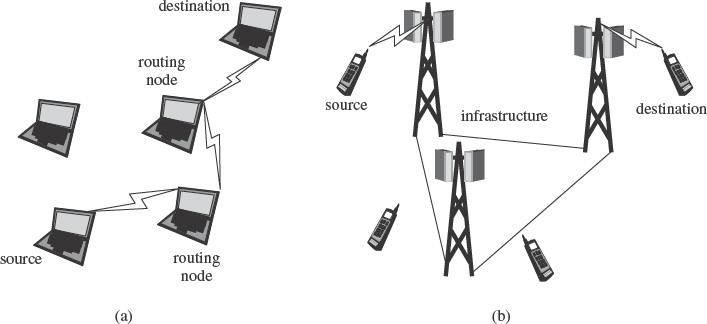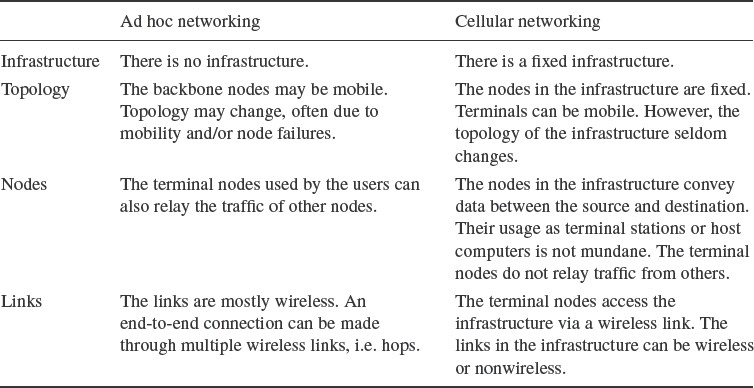2
Wireless Ad Hoc, Sensor and Mesh Networks
Wireless networking paradigms can be categorized broadly into two classes: wireless ad hoc and cellular networking. The existence of a fixed infrastructure is the main difference between these two classes (Figure 2.1). In the ad hoc networking paradigm there is no fixed infrastructure and packets are delivered to their destinations through wireless multihop connectivity. Nodes often act not only as hosts but also as routers, relaying the traffic by other nodes. The topology of an ad hoc network can change because nodes may not be fixed or, equally, they may fail. In the cellular networking paradigm, mobile terminals reach an access point via a single-hop wireless link. There is a fixed infrastructure that connects the access points to each other. Therefore, ad hoc and cellular networks are often called infrastructureless and infrastructured networks respectively. The basic characteristics of ad hoc and cellular networks are compared in Table 2.1.

Figure 2.1 (a) Ad hoc and (b) cellular network
Table 2.1 Ad hoc and cellular networking

2.1 Ad Hoc Networks and Applications
In wireless ad hoc networks, nodes are generally tetherless, which provides them with the freedom to move. They may act as both host and router, and can relay other nodes’ ...
Get Security in Wireless Ad Hoc and Sensor Networks now with the O’Reilly learning platform.
O’Reilly members experience books, live events, courses curated by job role, and more from O’Reilly and nearly 200 top publishers.

